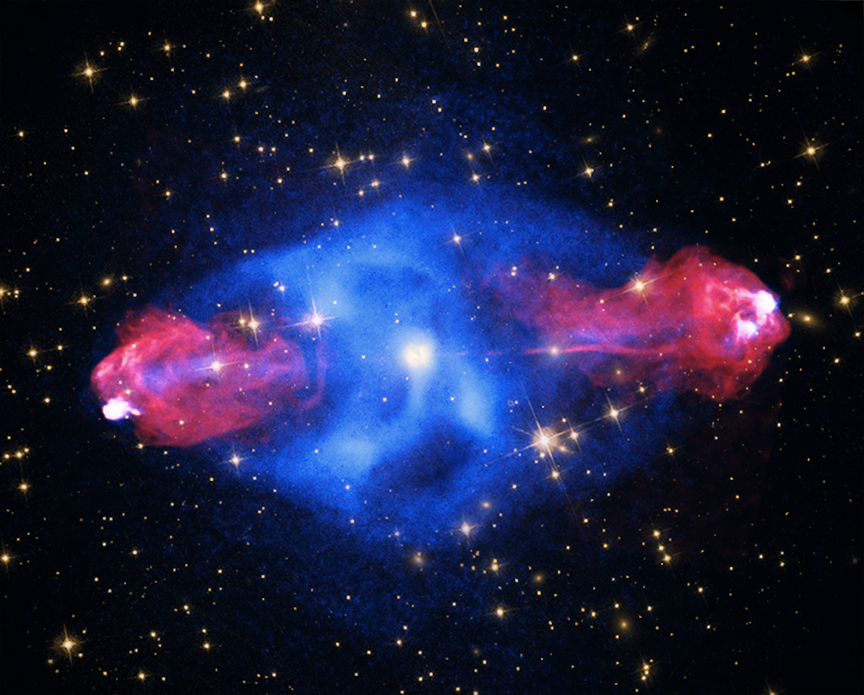Astronomers just solved the Universe’s missing mass mystery
They used bursts of radio waves to weigh, well...everything
Wikimedia
For decades, astronomers have pondered over the mystery of why up to half of the ordinary matter in the Universe was missing. Cosmologists predicted that this ordinary, or "bariyonic" matter should make up five percent of the Universe, with the rest being dark matter and dark energy. But that prediction failed — they only saw half of this amount when scanning all the stars, galaxies, and ordinary matter throughout the known Universe.
Astronomers have long believed that the Universe’s missing matter is hidden in a low-density plasma between galaxies known as the warm-hot intergalactic medium, or WHIM. But this plasma is really hard to detect.

Cygnus A galaxy
Wikimedia
In a new study published in the journal Nature, a team of astronomers finally found this missing mass with distant radio signals known as fast radio bursts, or FRBs. The amount of matter they detected was exactly consistent with what cosmologists predicted we’d find more than two decades ago.
Soon after FRBs were discovered in 2007, however, astronomers realized their potential as probes of this faint region of the Universe. While we still don’t understand exactly what FRBs are or how they’re emitted, we do know that most of them originate outside of the Milky Way and travel through vast reaches of interstellar space — including the WHIM — to reach telescopes here on Earth.
Radio signals slow down as they pass through matter, with longer radio waves being slowed down more than shorter ones — a phenomenon known as “dispersion.” By measuring the amount of dispersion in a sample of FRBs, the team was able to determine just how much matter there really was hidden away within the WHIM.
It only took 6 FRBs to weigh the Universe, but telescopes around the world are detecting more of these signals every day. Future observations will allow astronomers to map out how subatomic particles are distributed throughout the WHIM, shedding further light on one of the most mysterious regions of the cosmos.





















